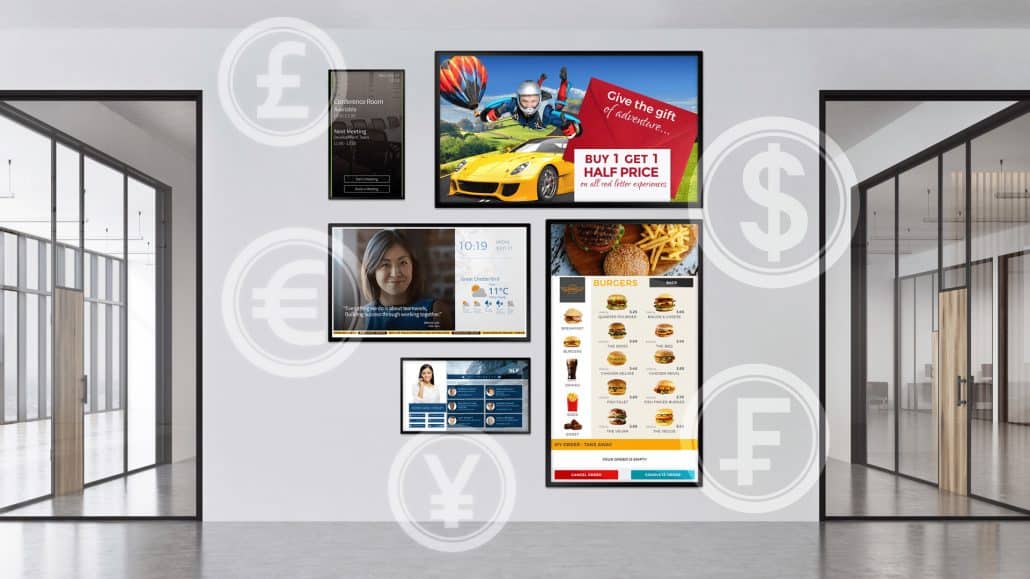
One of the most frequently asked questions we hear is “How expensive is Digital Signage?” This is typically asked by people looking at Digital Signage for the first time and also what we will be covering in our post.
This is a loaded question so let’s break it down “is it more expensive than…. [blank]?” In this case, [blank] is often referring to traditional, print media such as billboards, printed menus and posters etc.
In order to start delving into answering this question, it is important to consider all cost variables – tangible or not (from actual hardware through to time expenditure). As well as of course what you are looking to achieve.
In order to do this, we will break things down into:
- What you need to get started
- The ‘ongoing’ investment
- The benefits
Spoiler alert: digital isn’t always going to be the right choice – see if it is right for you below.
What do you need to get started with digital or traditional print media?
On face value, your initial expenditure on Digital Signage is probably going to cost more than creating, printing and distributing a poster. But that is if we just look at the physical costs of printing and even perhaps the distribution of the material to the right location(s). We need to also consider the cost of content creation, how often this needs to change, how many locations need to be considered and who will be responsible for the design and management.
Regardless of which option you choose, you will always need some form of content. This could be created by you, someone within the company with skills in this area or a 3rd party. In some instances there will be free content available which you can tweak to your use case.
Digital Signage setup
As a minimum you will require these things for Digital Signage
- Content
- A supported screen or media player – here at Signagelive we support a wide range so that customers can buy the right product based on their requirement
- An internet connection (if you want to manage your content remotely)
- A power source
- A computer or device to update your content remotely
- Someone to install it (an internal person or a 3rd party supplier)
- One or multiple people to change content remotely, either centrally or locally dependent on needs
Traditional print media
- Content
- A professional printing service
- A dedicated space for the media (such as a board)
- Delivery mechanism for the print materials
- Someone to update the content manually across any location(s)
Some other variables to consider will be:
- Can you repurpose existing screens? The simple answer for this from a Signagelive perspective is yes, most probably as you can use a supported external media player to plug into your screen.
- Can you repurpose existing print content for digital? Yes the same content can be reused but it needs to be formatted for the digital world.
With some of the above in mind, which of the below categories do you fall into?
RETAIL
Example a: Single store, location with two high street facing printed media showing promotions once every couple of months.
Typical organisations falling into this category could be:
- Corner store
- High Street retail charity store
- Local estate agent
Outcome: You can most probably carry on with traditional print signage as the cost and time to deliver this is not significant in comparison to Digital Signage costs to deliver the same message. One thing to bear in mind will be how static signage is perceived versus digital as it has been proven that there is more traction in digital content – a food retail store recorded a 700% increase in sales of Coconut Water after featuring the deal on digital display screens in the shop front.
Example b: Multiple locations franchise restaurant with breakfast, lunch and dinner menus which rotate every 3 to 4 weeks – screens spread across different territories in canteen areas.
Typical organisations falling into this category:
- High street supermarkets (Iceland, Tesco, Co-Op, Nisa local, SPAR etc)
- Franchise restaurants (in Hospital canteens, Harry Ramsdens, Chopstix etc)
- High street retailers ( GAP, Next etc)
- Territory wide estate agents
Outcome: If your content is changing frequently because your stores must be flexible in reacting to external factors such as competitive store promotions on the same high street, and you are tasked with increasing footfall and sales, then Digital Signage is most definitely the way to go. Not only do you have content changes disposable at your fingertips and changeable at a moment’s notice, but you can also save on time and money in reacting quickly to new promotional material, without having to wait for the printed signage posters to arrive to the stores and hope that they get put up in time.
CORPORATE
Example a: One location organisation with some health and safety and welcome signs in reception.
Typical organisations falling into this category:
- Recruitment company
- Local estate agent
Outcome: You can most probably keep using the whiteboards for recruitment and estate agent internal KPIs as everyone is in one location.
Example b: Multiple locations organisation, with the need to communicate with employees across all regions and tailor the message accordingly.
Typical organisations falling into this category:
- Global organisation with the need to engage with employees – so really this can be Recruitment agencies
- Territory wide estate agents
- Tech companies
- Logistic companies
Outcome: The need to tailor the content, language etc to each specific territory at ease and scale means your organisation should definitely be looking into Digital Signage. This is especially important if your employees don’t always have access to internal email infrastructure (logistics, warehousing, production etc). Not only will this help your Marketing, Comms, and HR teams to become more streamlined and effective with their time and messaging, but employee engagement will improve dramatically. Don’t forget to always pay attention to the content though. This can even be Yammer, or other KPI business intelligence tools. One such logistics company who made the switch is Kinaxia.
The above examples are not exhaustive, and there will be plenty who will be in between the scales given. If you’re not sure, you are always welcome to speak with Signagelive for an honest opinion.
The ‘ongoing’ investment
Traditional print media:
- Ongoing Content creation
- Ongoing printing costs
- Transportation cost
- Personnel time to put up updated posters accordingly
Example: Mary owns a cafe and wants to display her regular menu items but also display her specials for the week. These specials change on a weekly basis depending on the stock that’s fresh at that time.
If Mary wants 4 different locations to update this special (4 different menu locations), they’re going to need to have to redesign and print 4 different posters throughout the month and 52 odd posters throughout the year. On top of that, Mary is going to have to spend her time changing the posters every week and paying for replacements in case of damages etc. As the owner of the cafe, Mary has other hats she needs to wear on the day-to-day basis.
Digital Signage:
- Licencing for software (ideally one that comes with support and updates included)
- Refresh hardware costs, typically from 5-years on
- Possible hardware replacement costs (if not under warranty)
Example: Mary’s competitor also owns a cafe in 4 different locations. Their content also has frequent changes to incorporate specials of the day alongside the standard offerings. Time spent on content changes and updates equals to 10 minutes per day to update the ‘specials’, everything else (content wise) has already been intelligently sent to the relevant locations via the CMS they use. Sometimes Mary’s competitor runs a competition using QR codes (scan the code and get a free cup of coffee/tea with your meal). All this is managed from Mary’s competitor’s home office while they are also wearing multiple hats to keep the business running.
The benefits
What benefits does Digital Signage hold over traditional print media that would validate an extra investment up front?
Here are just a few of them:
Free content – A Digital Signage CMS provider will most likely provide you with free content through a marketplace that you can utilise. If you can find content that you like, you can save thousands of £s alone in creative work. Mary’s competitor loves one of the designs for the coffee shop and finds it so easy to update the pricing and items that an additional content creation cost isn’t needed.
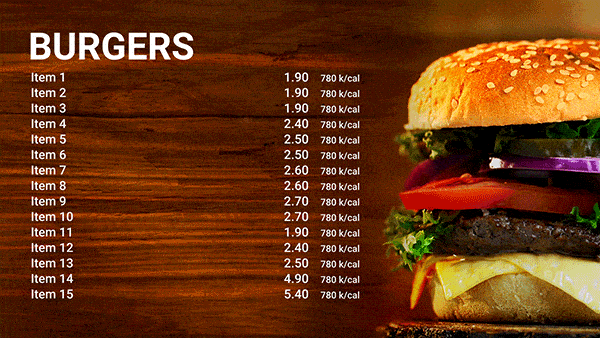
Scheduled content – Digital Signage can schedule your content to display at the right time of day or even specific times of the week. Looking to display latest news reports in the morning and traffic in the evening? Looking to display your end of shelf life items near the end of the day? All of this is achievable with Digital Signage where traditional print media would become cumbersome.
Motion! – It’s a simple one but a big one. Regardless of why you’re looking at Digital Signage, you want to make sure people are engaged with your content. Nothing achieves this quite like motion. This could be simple moving items to full video.
Quicker updates – Digital Signage content can be updated in minutes. Unless you already have the correct print ready, physical media could be days or even weeks.
The chance for more – You may need to invest further but if you’re looking to create a really engaging experience, you can look to trigger content to your screens or create a touch-screen experience. Mary’s competitor started off with QR codes, but the options are endless, and the point is that Digital Signage offers flexibility.
Final thoughts
It isn’t straightforward to answer whether Digital Signage is more expensive or not – unless of course you’ve thought of the different aspects to take into consideration, in which case the answer in 90% of the situation will be yes. But this is the reason we wanted to put this post together.

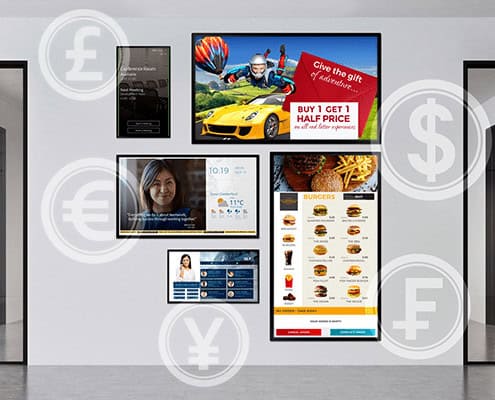
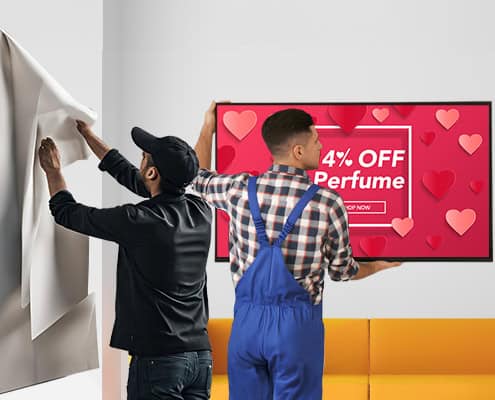
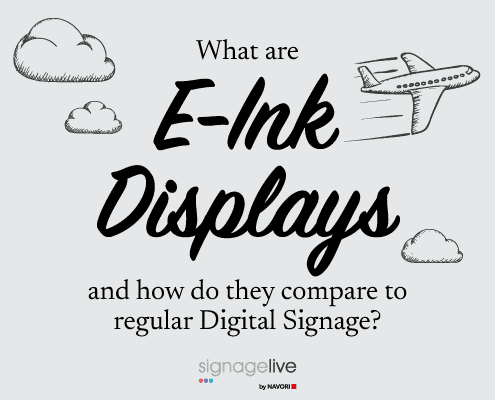

You must be logged in to post a comment.